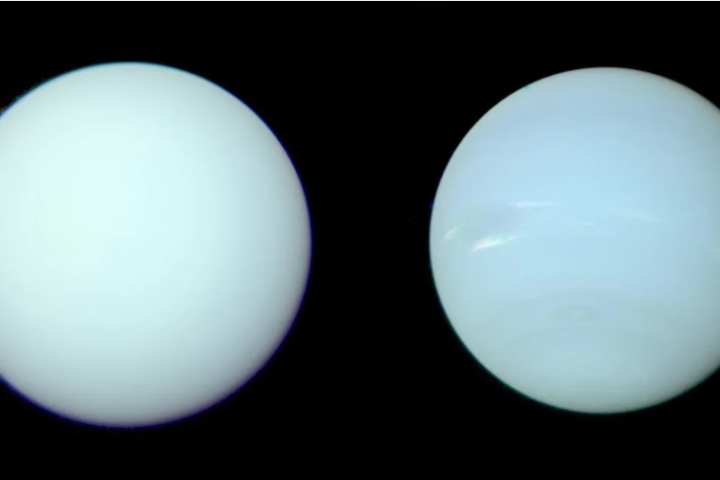French astronomer Urbain Jean Joseph Le Verrier and English astronomer John Couch Adams independently predicted the existence and position of the planet Neptune using only mathematics. This was a very important event in the history of astronomy. Neptune, whose existence was confirmed visually in 1846, was the first planet to be discovered mathematically rather than by observational means.
On the night of March 13, 1781, astronomer William Herschel began his usual attempt to study the stars with a telescope he had built himself. While observing alone in his garden, he noticed that an object had shifted and seemed to be farther ahead of the other stars. Everyone who had ever seen Uranus had thought it was a star. Herschel at first thought it was a comet. After observing it for a while, he realized that the star he had discovered revolved around the Sun. What Herschel discovered was not a star, but Uranus, the first planet discovered since ancient times.
- Scientists assert that extinct pathogens brought about the collapse of ancient civilizations.
- Blinken says US will “pursue” prisoner swap with Russia

This discovery made him famous overnight. Herschel had actually discovered the planet Uranus. Herschel had originally named the planet Georgium Sidus, the Georgian Star, in honor of King George III of England. But then, following the tradition of naming planets after Greek mythological gods, he chose to call it Uranus. Thus, Uranus became the first planet found with a telescope. In 1977, it was discovered that Uranus also had rings around it. But the story did not end there. Thanks to the discovery of Uranus, we would discover the planet Neptune. And the discovery of Neptune would be thanks to mathematics.
The discovery of Uranus revealed the existence of Neptune
As astronomers later learned after its discovery, Uranus is a planet that behaves differently. First of all, the axis tilt of Uranus is around 98o. That is, it orbits almost sideways. Also, its orbit is not a perfect ellipse.

The data obtained in the time since Uranus was identified as a planet showed that the orbit of this planet did not obey Newton’s laws of motion. There was a way to explain this discrepancy. That was to put forward a hypothesis based on the effect of the gravitational pull of an undiscovered planet outside the orbit of Uranus. And this hypothesis was, of course, correct.
Discovery of Planet Neptune
John Couch Adams (1819-1892), a young English mathematician from Cambridge University, and Urbain Le Verrier (1811-1877), a French mathematician and astronomer, began to investigate the matter. Adams calculated where the orbit and position of such a planet might be. He then sent his calculations to the Royal Observatory at Greenwich. However, his calculations were not taken too seriously. Meanwhile, the French astronomer Urbain Le Verrier had made the same calculations. He enlisted the help of Johann Galle of the Berlin Observatory to verify his calculations. On September 23, 1846, the day he received Le Verrier’s predictions, Galle located Neptune after spending only 30 minutes at the telescope.

German astronomer Johann Galle’s verification of the mathematical calculation proved that it was the eighth planet. The planet was then given another name from Roman mythology to match the other planets in the sky. It was called Neptune, the Roman god of the sea. This was a new achievement and Le Verrier became the most famous astronomer of the day. But there was a problem that we often encounter. After the discovery of Neptune, a dispute arose over who was the real discoverer of the new planet. This conflict exacerbated existing political tensions between France and Great Britain. As a result, Galle, the first to see the planet through a telescope, became synonymous with the discovery.


